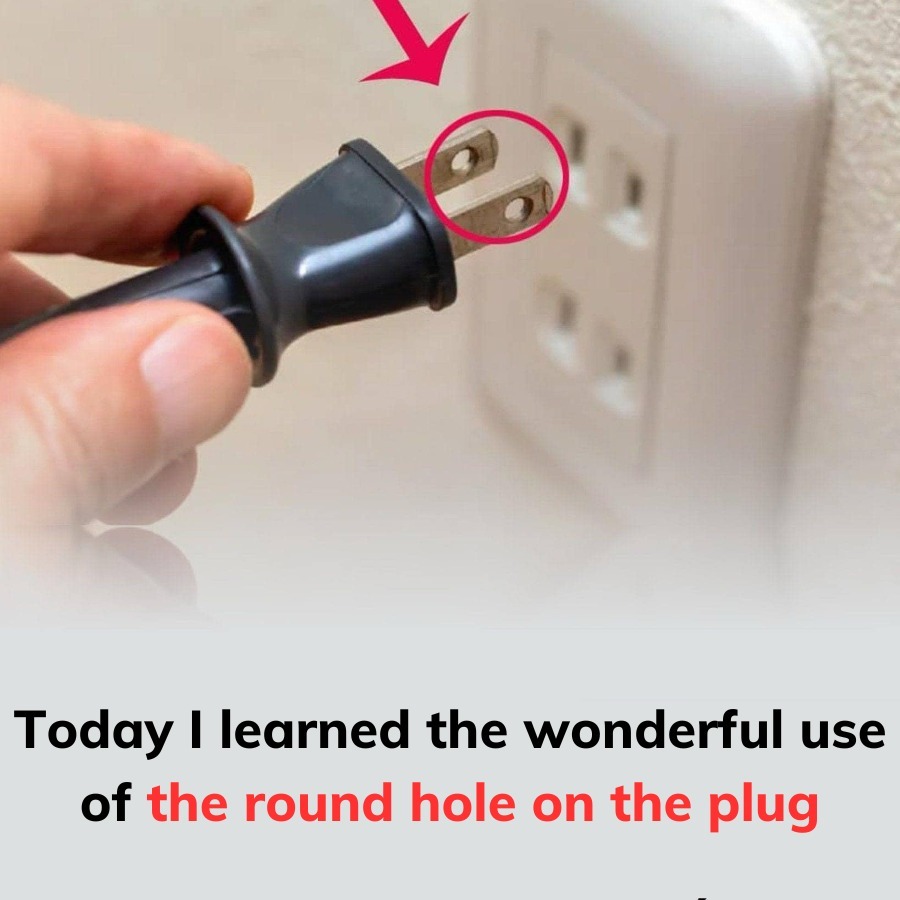Today, I discovered something fascinating about an object we encounter almost daily but rarely give much thought to: the two small round holes on flat power plugs. At first glance, these holes might seem like a minor design feature, perhaps even decorative. However, they serve multiple practical purposes that improve safety, functionality, and efficiency, making them an essential part of the plug’s design.

The primary reason these two holes exist is to enhance safety when using the plug. When you insert a flat power plug into a socket, the holes align with small raised contacts inside the socket. These contacts create a more secure connection between the plug and the socket, ensuring the plug remains stable and tightly held in place. Without this design, the plug might become loose over time, resulting in poor electrical contact, increased resistance, and even the risk of electrical arcing or short circuits. By keeping the plug firmly locked into the socket, these small holes prevent dangerous situations like overheating, sparking, or accidental disconnection.
Beyond their safety benefits, these holes also play an essential role during the manufacturing and quality control processes. They allow manufacturers to secure the plug’s internal components more effectively, ensuring everything stays aligned and firmly in place during production. Additionally, these holes can act as inspection points, enabling quality control teams to test the electrical performance and safety of each plug before it leaves the factory. Specialized testing tools can fit directly into these holes, providing accurate readings and ensuring that every plug meets safety standards before reaching consumers.
Interestingly, the holes also serve a cost-saving purpose during production. By drilling two small holes in each plug, manufacturers can slightly reduce the amount of insulating plastic or other raw materials used. While the material savings per plug may seem negligible, they add up significantly when you consider the millions of plugs produced worldwide every year. This small design choice demonstrates how even minor adjustments in product engineering can lead to meaningful cost reductions and environmental benefits.
Another advantage of these holes lies in their compatibility with certain socket designs that include locking mechanisms. In industrial settings or areas with heavy machinery and vibrations, it’s common for outlets to have small pins or clips that fit directly into these holes. These locking mechanisms ensure the plug remains securely attached, even in environments where it might otherwise become dislodged. This feature helps maintain a consistent power supply and reduces wear and tear on both the plug and the socket.
From a consumer perspective, the two holes also contribute to product verification and safety checks. Some manufacturers attach tamper-proof seals or quality certification tags using these holes, making it easier for customers to verify the plug’s authenticity. Additionally, they provide a quick way to inspect whether the plug has been tampered with or damaged before use.
Beyond their technical and manufacturing benefits, the holes even have subtle advantages in terms of usability. For instance, they make it easier to grip the plug when pulling it out of the socket. This design consideration might seem small, but it enhances user experience, particularly for people with limited hand strength or dexterity.
It’s fascinating to realize how much thought goes into designing even the smallest details of everyday objects. The two small holes on flat power plugs might appear insignificant, but they address multiple challenges simultaneously—ensuring safety, reducing costs, improving durability, and supporting manufacturing efficiency. They are a perfect example of how innovative engineering can optimize even the most common household items.
Furthermore, the holes also make the plug design universally adaptable. While socket standards vary across different regions and countries, the presence of these holes has become a common design feature. This consistency simplifies global manufacturing processes and reduces the need for region-specific plug designs.
In conclusion, the two round holes on flat power plugs are far more than just a random or decorative feature. They serve critical purposes in ensuring a secure connection, preventing electrical hazards, assisting in quality control, enabling cost savings, and enhancing the overall user experience. The next time you plug in your charger, kitchen appliance, or electronic device, take a moment to appreciate the thought and precision behind those two small holes. They might seem like a minor detail, but they represent a carefully engineered solution to multiple challenges, proving that even the smallest features can have a significant impact in our everyday lives.





